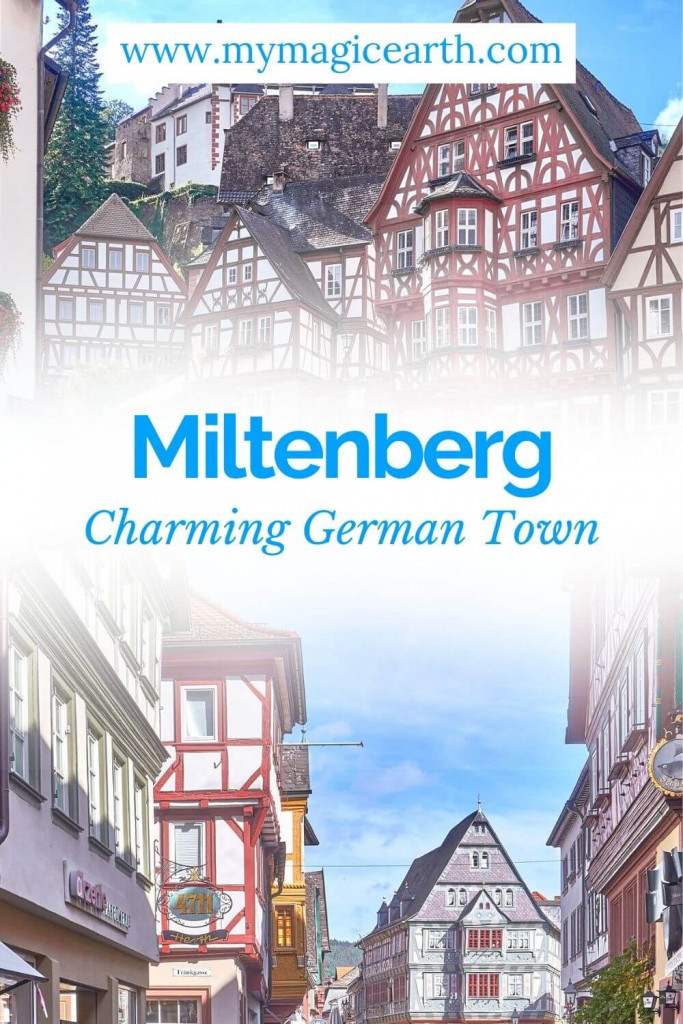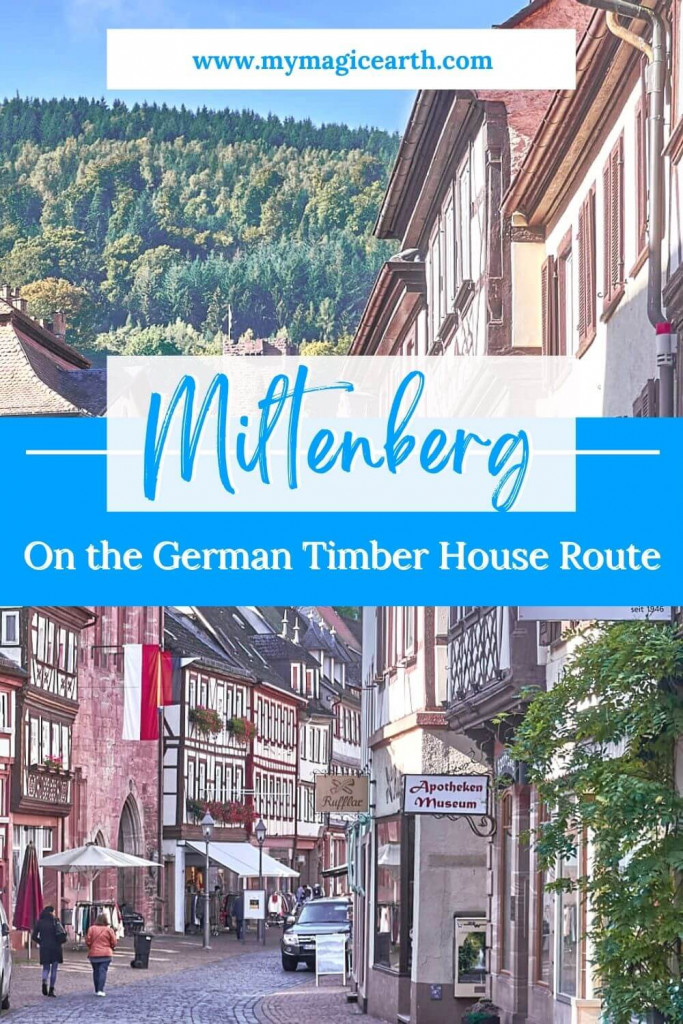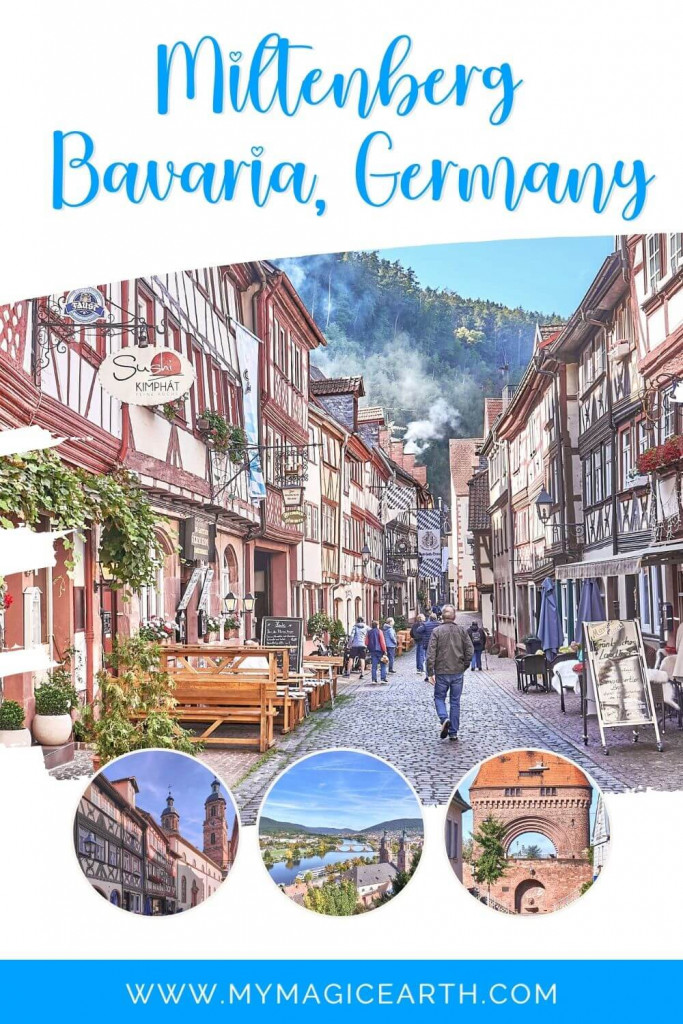Just an hour’s drive from Frankfurt am Main lies the pretty town Miltenberg. Situated on the left bank of the Main River, between the Spessart and Odenwald ranges, Miltenberg’s old town is a treasure collection of charming half-timbered houses dating from the 15th to 18th centuries. These stunning structures can be found nearly everywhere you turn, adding to the town’s romantic ambiance and historic charm.
Miltenberg’s main street is the bustling Hauptstraße, which runs between the city gates of Mainzer Tor and Würzburger Tor. Most of the town’s attractions can be found along this road, including the enchanting Schwarzviertel (Black Quarter), the Old Market Square (Schnatterloch), and Engelplatz near the town hall. From these locations, you can take a leisurely stroll up to Miltenberg Castle, where you can take in the beautiful natural landscape and views of the town below.
The captivating old town of Miltenberg, Germany is a place where it’s easy to spend an entire day exploring. As I wandered through the winding streets, admiring the architecture and soaking up the atmosphere, I stopped at one cozy restaurant to sample the local cuisine. The town’s picturesque streets and historic buildings make it a delightful place to explore. And, as I discovered, its natural landscape and culinary highlights are equally captivating. Overall, I was so fascinated by Miltenberg’s romantic ambiance and rich cultural heritage that I would highly recommend it to anyone visiting the region.
Now follow me to explore the pretty town Miltenberg in Bavaria:
- Exploring Schwarzviertel (Black Quarter)
- Schnatterloch: A Charming Market Square
- Discovering Engelplatz
- Climbing up Miltenberg Castle
- Walking the River Promenade

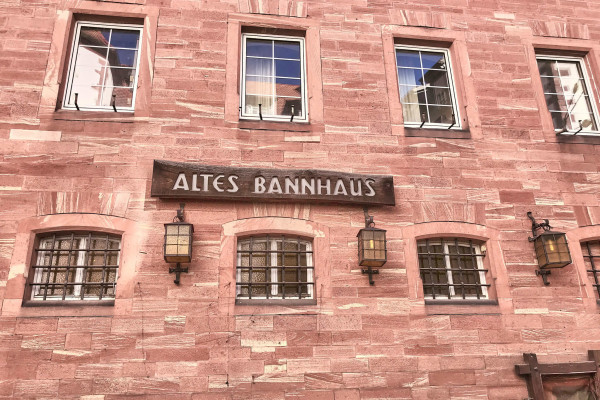
Exploring Schwarzviertel (Black Quarter)
As I began my walking tour in Miltenberg, I made my way towards the Schwarzviertel (Black Quarter), which is located at the intersection of Mainzer Street and the Hauptstraße. This area is the oldest part of the town and is home to many beautiful half-timbered houses that line the narrow Hauptstraße. The name “Black Quarter” (Schwarzviertel) comes from the fact that the hill casts its shadow over the area, making it difficult for the sun to reach the ground during the winter months.
One particular building that caught my eye in the Black Quarter was the Alte Bannhaus, which was built in red bricks. It used to be a customs building and later served as a municipal prison from the 19th to the early 20th century. Right next to it is the Brauhaus Faust brewery, which produces Faust beer specialties. Their Eisbock has won the World Beer Cup twice, and visitors can take a tour inside the brewery on weekends.
At the end of the Schwarzviertel, I came across the St. Jakobus church. Its neoclassical towers from 1830 dominate the cityscape and can be seen from the Miltenberg Castle hill.
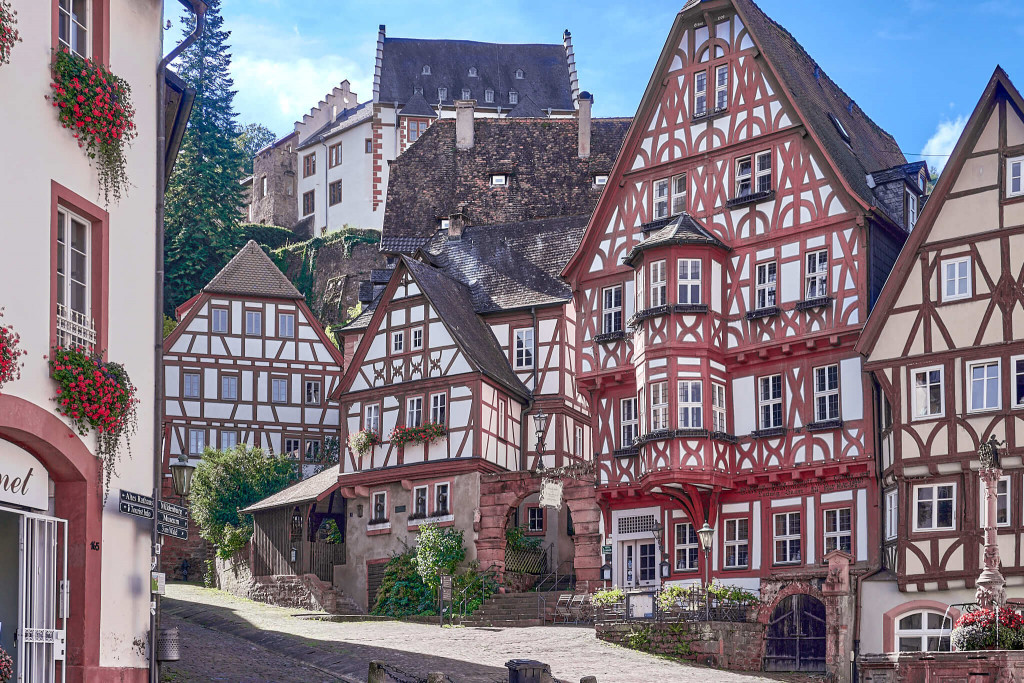
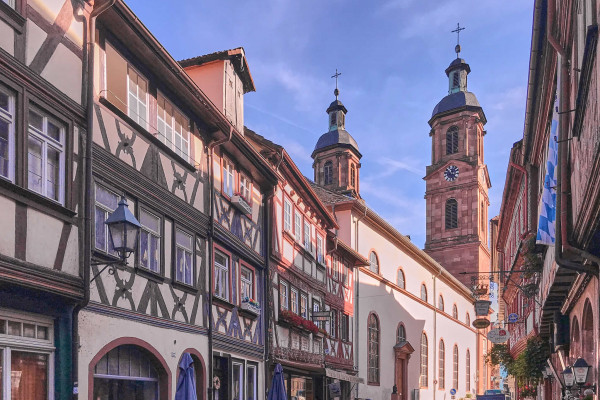
Schnatterloch: A Charming Market Square
While the heart of the city beats in the old market square with its iconic fountain, the true highlight of the area is the magnificent half-timbered houses with their slanted floors and tilting walls.
You may have heard of the famous German Half-Timbered House Route, which links over 100 medieval towns dotted with these distinctive buildings. Although they are all timber-frame constructions, the architectural styles, such as shape and color, differ among the regions. For example, the half-timbered buildings in Quedlinburg have colorful walls between exposed beams, while most of the half-timbered buildings in Miltenberg have dark red or brown beams.
Other noteworthy buildings in the area include the Schnatterloch tower, the Renaissance archway at the entrance to the castle, and the Renaissance fountain. Together, these historic buildings form a magical ensemble, and are some of the most photographed views in Germany.
One of the main half-timbered house buildings in the old market square is the Museum Stadt Miltenberg (city museum, Hauptstraße 169 – 175). While it may not be as attractive as the other half-timbered buildings, the museum houses a rich collection of treasures, and special exhibitions.
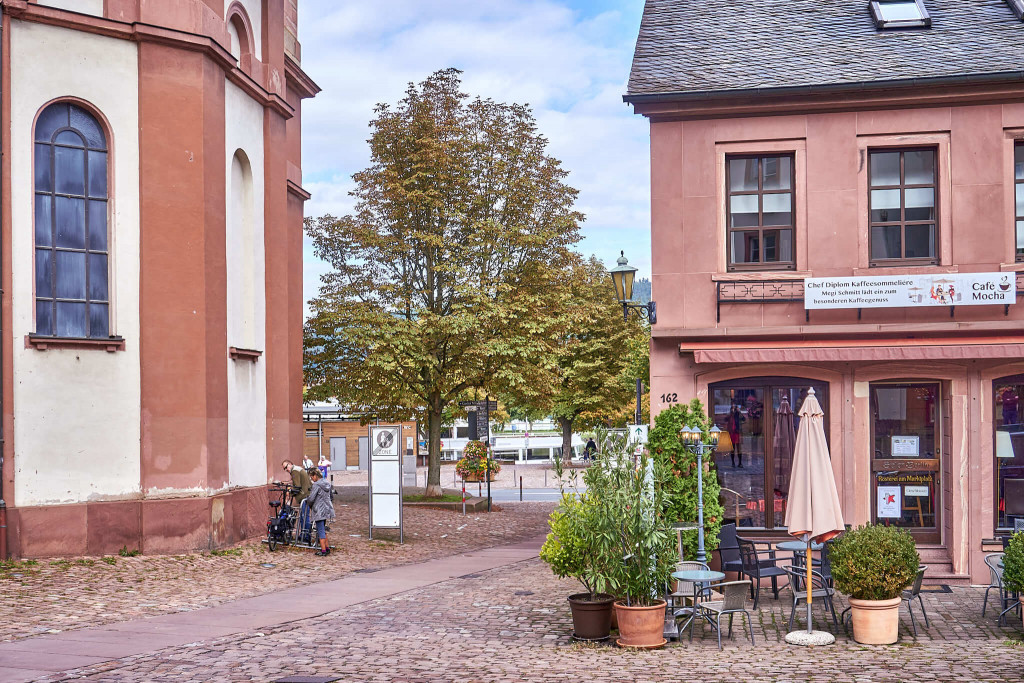
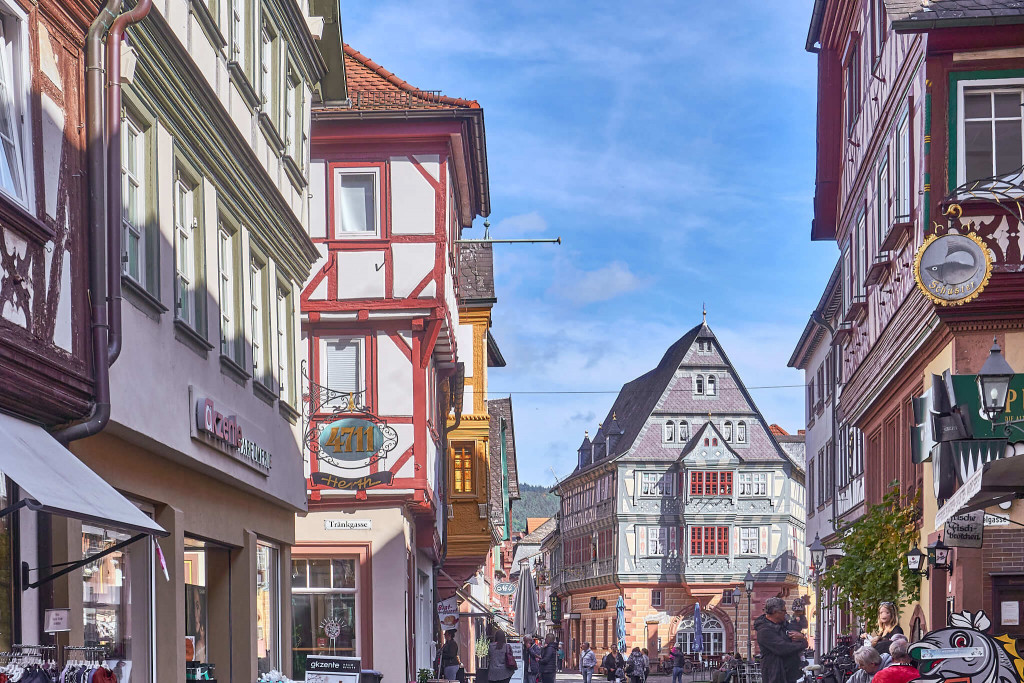
Discovering Engelplatz
As I walked along the Hauptstraße from the old market, I couldn’t help but admire the row of half-timbered houses that lined the street, each with a ground floor occupied by shops, restaurants, bakeries, and other businesses. On my way to the Engelplatz, I passed by the Old Town Hall, built in the typical red limestone of the region, which now hosts events of all kinds. The markings on the outer facade serve as a reminder of earlier flood levels.
At the crossing of Hauptstraße and Riesengasse stands the Zum Riesen, a famous hotel that claims to be the oldest princely hostel in Germany. It has accommodated many famous people throughout history. The hotel has a restaurant that serves Franconian cuisine and beer from the Brauhaus Faust in the Schwarzviertel. You can easily book a room in this hotel online.
The Engelplatz is named after the hotel Zum Engel, which is part of the town hall building. The Tourist Information office is inside the town hall. The staff at the tourist office were friendly and helpful. They gave me a city map and answered my queries about guided tours, accommodation, and excursion tips. They also offer tourist information in English. Additionally, there is a public toilet inside the building.
Opposite the town hall is the church Franziskaner Klosterkirche. The Franciscans, who had been in the city since 1630, initially lived in the hospital. However, due to the Thirty Years’ War, construction of the church did not begin until 1660. The church was finally built according to the plans in 1667, featuring a central portal donated by the Archbishop of Mainz, Johann Philipp von Schönborn, and a stunning Baroque interior design.
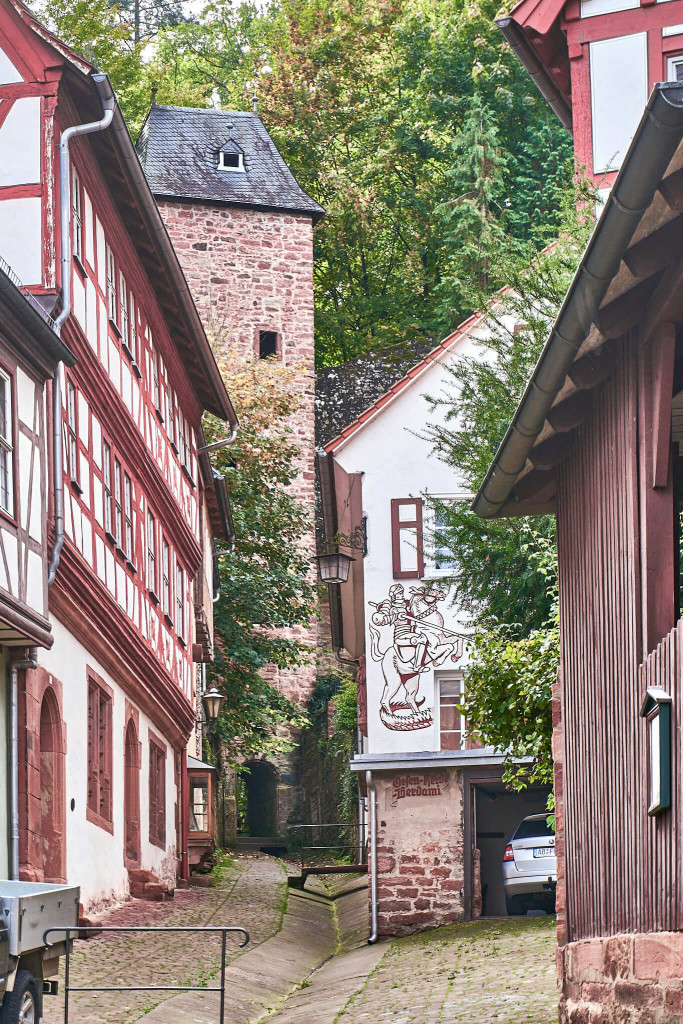
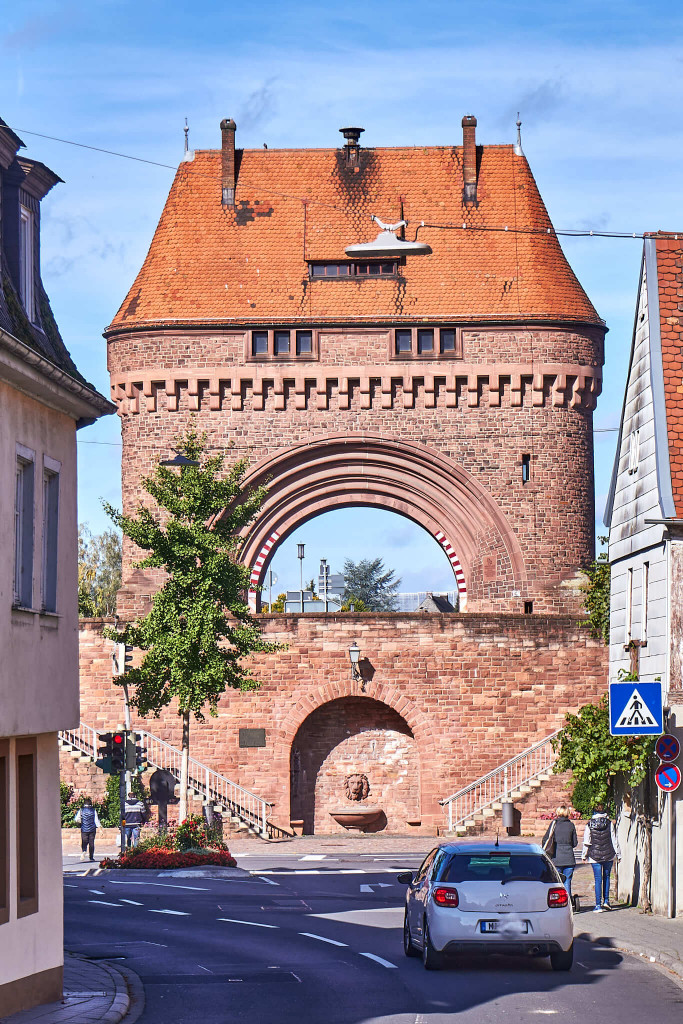
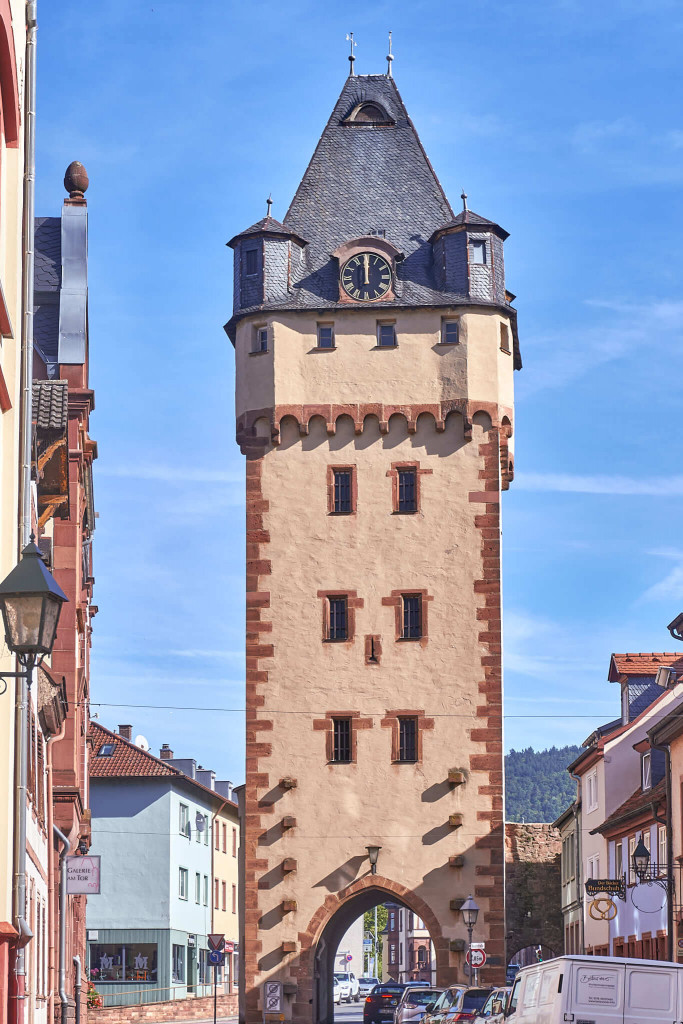
Climbing up Miltenberg Castle
Behind the town hall at the corner of the Burgweg stands the Evangelical church built in 1897, a monument worth seeing due to its architectural style and the choice of materials. The colorful windows with depictions from the Bible are also remarkable.
The street Burweg is a quiet and easy walkway next to the old city wall. On the way, I saw the Jewish Cemetery on the left side, which looks compact next to the wall. It took me only a few minutes to reach Miltenberg Castle.
The Miltenburg Castle was built around 1150 by order of the Hohenstaufen King Konrad III. The castle got its current appearance in the 16th century. In the 19th and 20th centuries, the castle changed hands several times. It also partially got expanded and modernized the complex.
In 1979, the pretty town Miltenberg in Bavaria acquired the building. After extensive construction work, the Mildenberg Castle is open to the public again. Old icons (between the 17th to 19th centuries from Russian and Greek) and contemporary art have been presented in the Miltenberg Castle Museum.
Because the castle was partially under renovation, I gave up the idea of exploring the inside of the castle. Instead, I enjoyed the beautiful view over the Main valley and the city. It is the best place to capture the two towers of St. Jakobus church, the bridge, the Main River, and the old town!

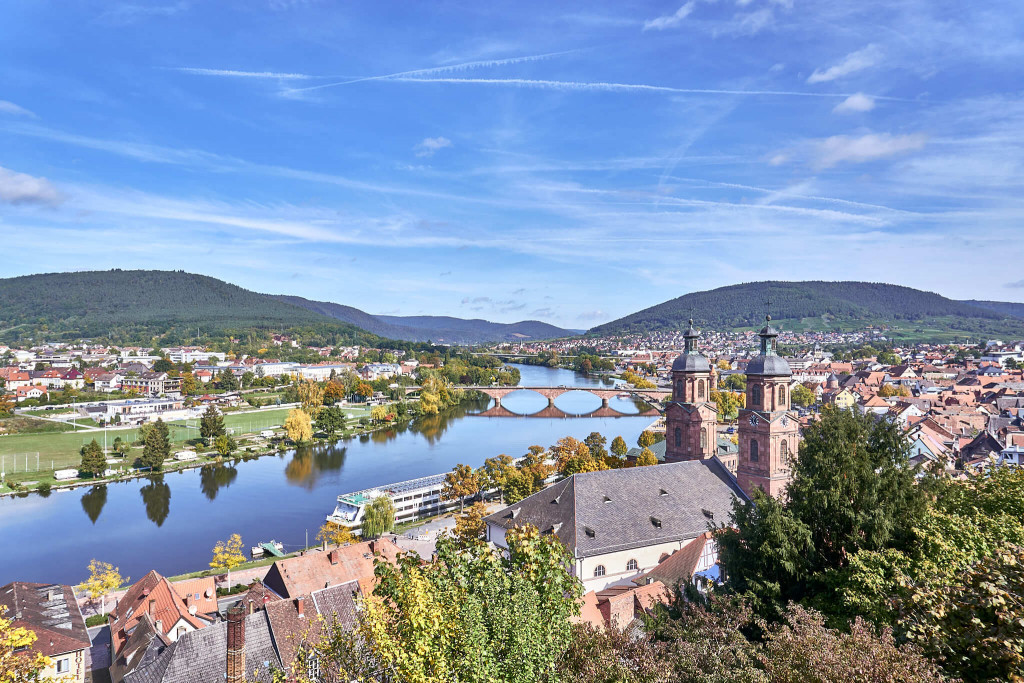
Walking the River Promenade
From the castle, I walked back to the Schnatterloch and Schulstraße street to the promenade of the Main River. The new path is an attractive path along the Main. It consists of two levels, an upper paved terrace with a view of the Main and lower open space along the river connected by stairs and ramps.
The flood protection consists of a concrete wall up to 2.20 metres high with sandstone cladding on both sides. Such measurement aims to control the flood that had damaged the old town several times in history. At street level, however, the wall only has a maximum height of 0.9 metre. The homogeneous color effect of the Miltenberg sandstone underlines the twisted shape of the flood protection wall.
I walked along the river aimlessly until I saw the bizarre pink sandstone fountain Staffelbrunserbrunnen (The Stair Piddlers’ Fountain) with three peeing men. After my research, I learned that the Staffelbrunserbrunnen depicts the behavior when defecating during a flood.

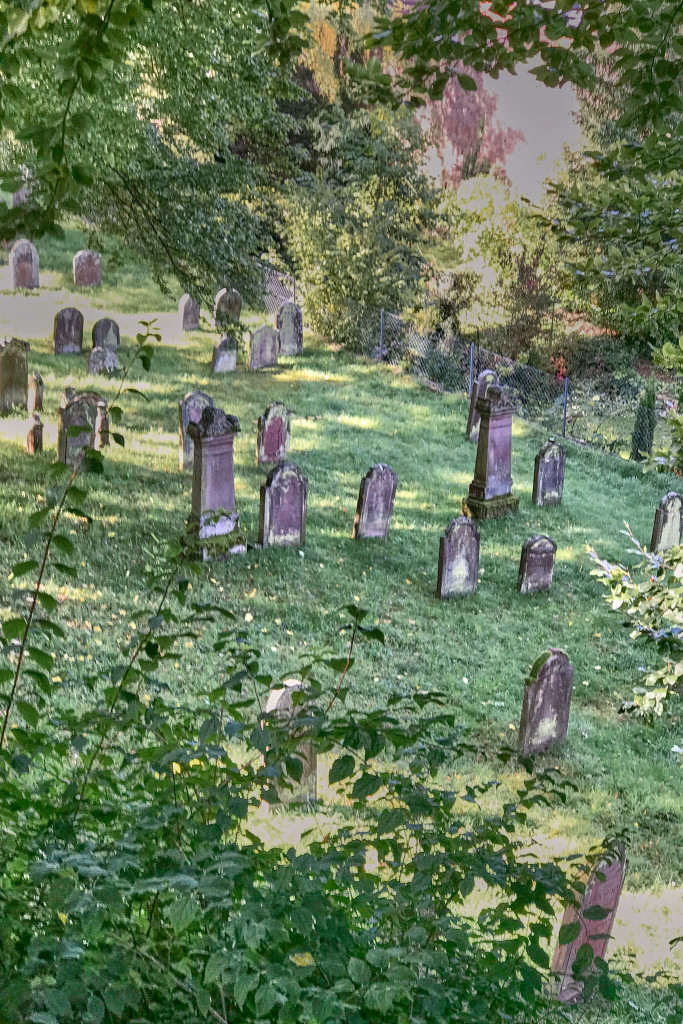

Travel tips for the pretty town Miltenberg in Bavaria
Where to stay
Some of the hotels in the pretty town Miltenberg in Bavaria have restaurants and convenient locations, for example:
- Schmuckkästchen: a hotel with a wine house and is at the Old Market Square (Schnatterloch)
- Giant Inn: the old hotel I mentioned above and in the middle of the old town
How to get there
For those interested in visiting nearby villages such as Michelstadt (a small town with many sites and half-timbered houses), I recommend renting a car to allow you more freedom and leisure. Coming from Frankfurt, the best route is to take Highway A3 in the direction of Wurzburg/Aschaffenburg and then change to B469 towards Miltenberg at the exit of Aschaffenburg-Stockstadt. The driving time is about one hour. There are plenty of paid parking places along the Main River.
The Miltenberg Train Station is about one kilometre of walking distance from the old town centre. If you take the IC (Inter City) or ICE (Inter City Express), you need to change trains in Aschaffenburg. You can also take the regional trains (RE, Regional Express) or RB (Regional trains). Please check connections on the DB Bahn. The ride is about one and a half hours.
